BICORN
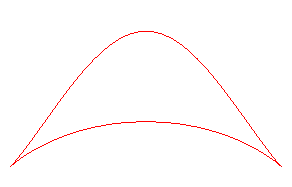
| next curve | previous curve | 2D curves | 3D curves | surfaces | fractals | polyhedra |
BICORN

| Curve studied by Sylvester
in 1864, Cayley in 1867 and G. de Longchamps in 1897.
Name given by Sylvester. Other name : cocked hat curve. |
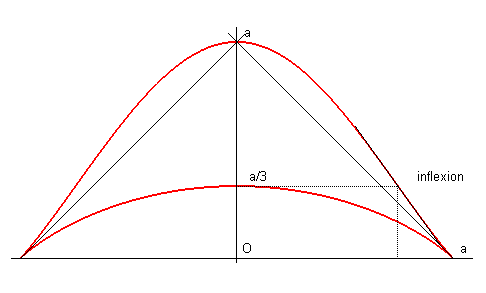 |
Cartesian equation: Cartesian parametrization: Area: Rational quartic, circular curve. |
| First construction (Charlotte Scott,
Intermédiaire des mathématiciens, 1896, p. 250)
Let (C) and (C') be two tangent circles, of centres O and O' and of radius a; N be a point describing (C'). The bicorn is the locus of the intersection points between the line parallel to (OO') passing through N and the polar of N with respect to the circle (C). |
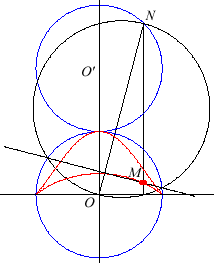 |
| Second construction (G. de Longchamps, JMS,
1897)
Given two fixed points A(a, 0) and B(–a,
0), a circle (C) of centre C(b,
c) and radius
r,
with a current point P, the parametrization of the locus of the
orthocentre H of the triangle ABP is Note: when a = b = c = 0, we get the Kappa
curve, when |
 |
| Third construction (V. Jerabek, mathesis,
1912).
Given two fixed points A(a, 0) and B(–a, 0), a circle (C) of centre C(0, b) and radius c, and a variable diameter [PQ] of the circle (C), the parametrization of the locus of the intersection points of the lines (AP) and (BQ) (or (AQ) and (BP) ) is If M and N are the intersection points of the lines (AP) and (BQ) and the lines (AQ) and (BP), the line (MN) envelopes a right cissoid. It is possible to generalize by considering the two points P and Q as linked to a moving plane overlying a fixed plane containing A and B ; here, the moving plane is in rotational motion around C. |
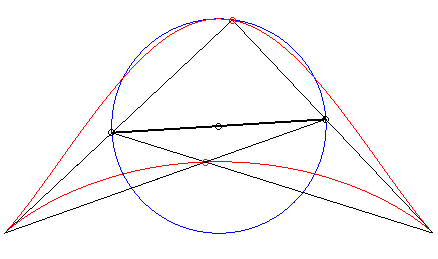 |
| With this construction we can get the bicorn as the orthogonal
projection of the intersection of an elliptic cone and a hyperbolic paraboloid
(biquadratic
curve).
The vertex of the cone is the point A1(a,0, h) on the vertical line passing by A, and its directrix is the circle (C). The paraboloid is defined by the 3D quadrilateral (A1B'BB1) where B'(a, a, 0) and B are symmetric with respect to C, and B1(–a, 0, h) is on the vertical line passing through B. |
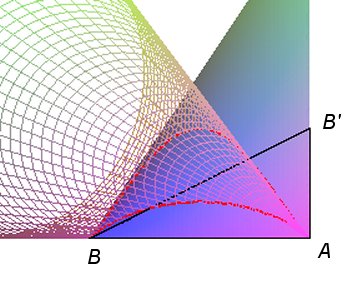 |
Another characterization (Roland
Deaux, 1945): the bicorn is the locus of the centre of the incircle
of a triangle two vertices of which are fixed and the perimeter of which
equals the sum of the radiuses of its excircles.
| A point M of a circle can be projected on two
points P and Q on two tangents to the circle perpendicular
to one another. When M describes the circle, the line (PQ)
envelopes a quartic with two cusps whose parametrization is, up to similarity,
given by But it is not a bicorn because the tangents at the cusps do not pass through the vertex. |
 |
|
|
|
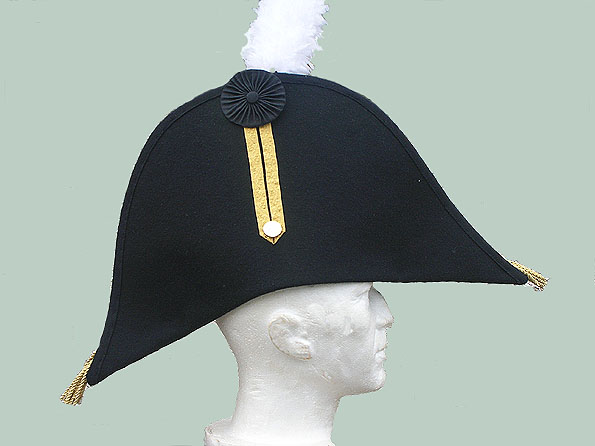 |
© Service audiovisuel École Polytechnique |
| ... Henri Lazennec applied Jerabek's construction and
replaced the circle by a cardioid.
He considers the points A(–4, 0), B(4, 0), C(0, –3), D(0, –2). The extremities of the line segment [PQ] of fixed length 4, passing through D and whose middle I describes the circle of centre C and radius 1, describe a cardioid with cusp D. When [PQ] turns on the cardioid, the intersection point M of (AP) and (BQ) describes a curve looking like the bicorn, with its tips upside-down. Parametrization: |
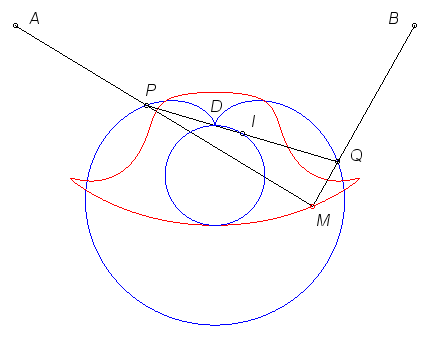 |
| next curve | previous curve | 2D curves | 3D curves | surfaces | fractals | polyhedra |
© Robert FERRÉOL 2017